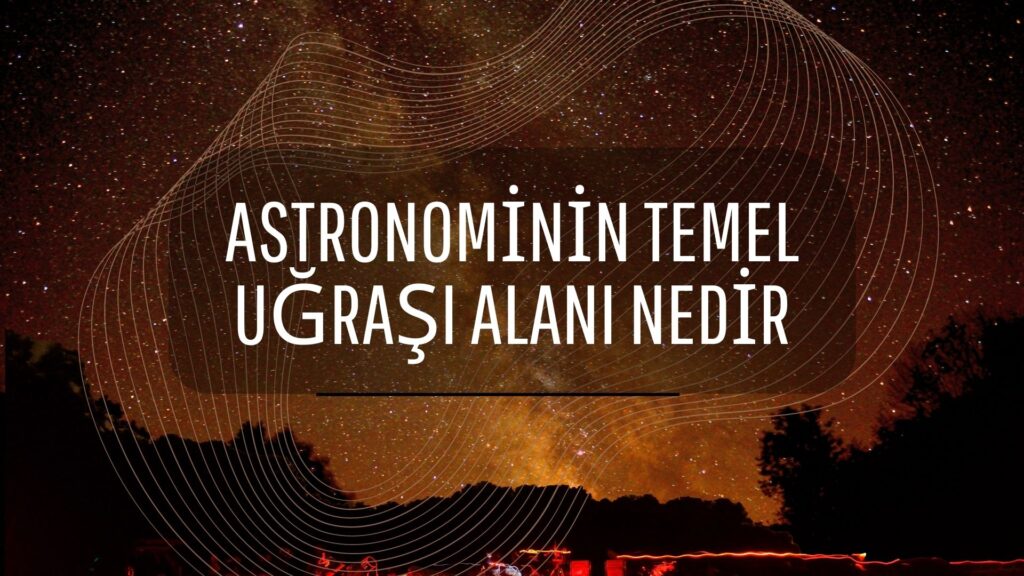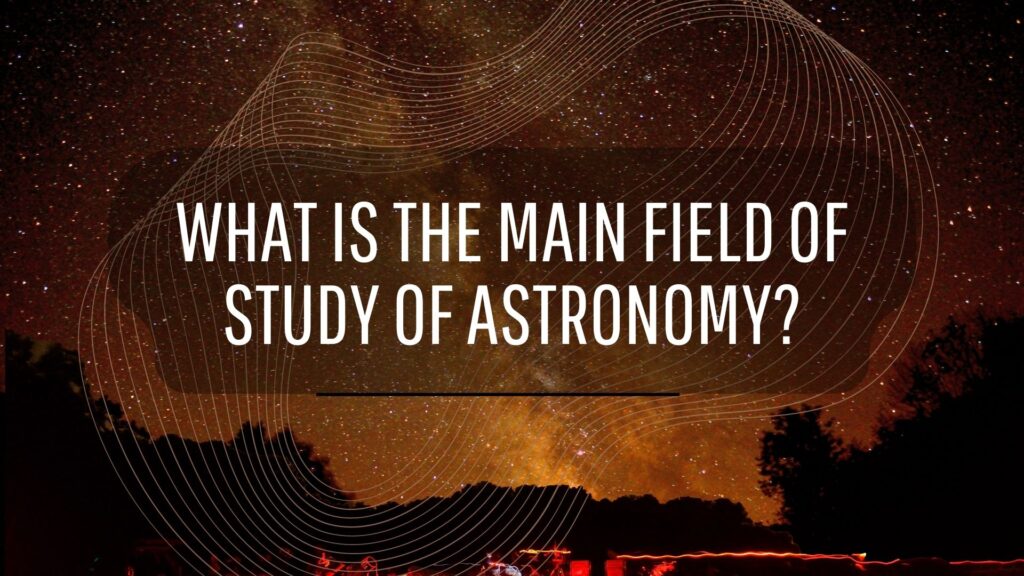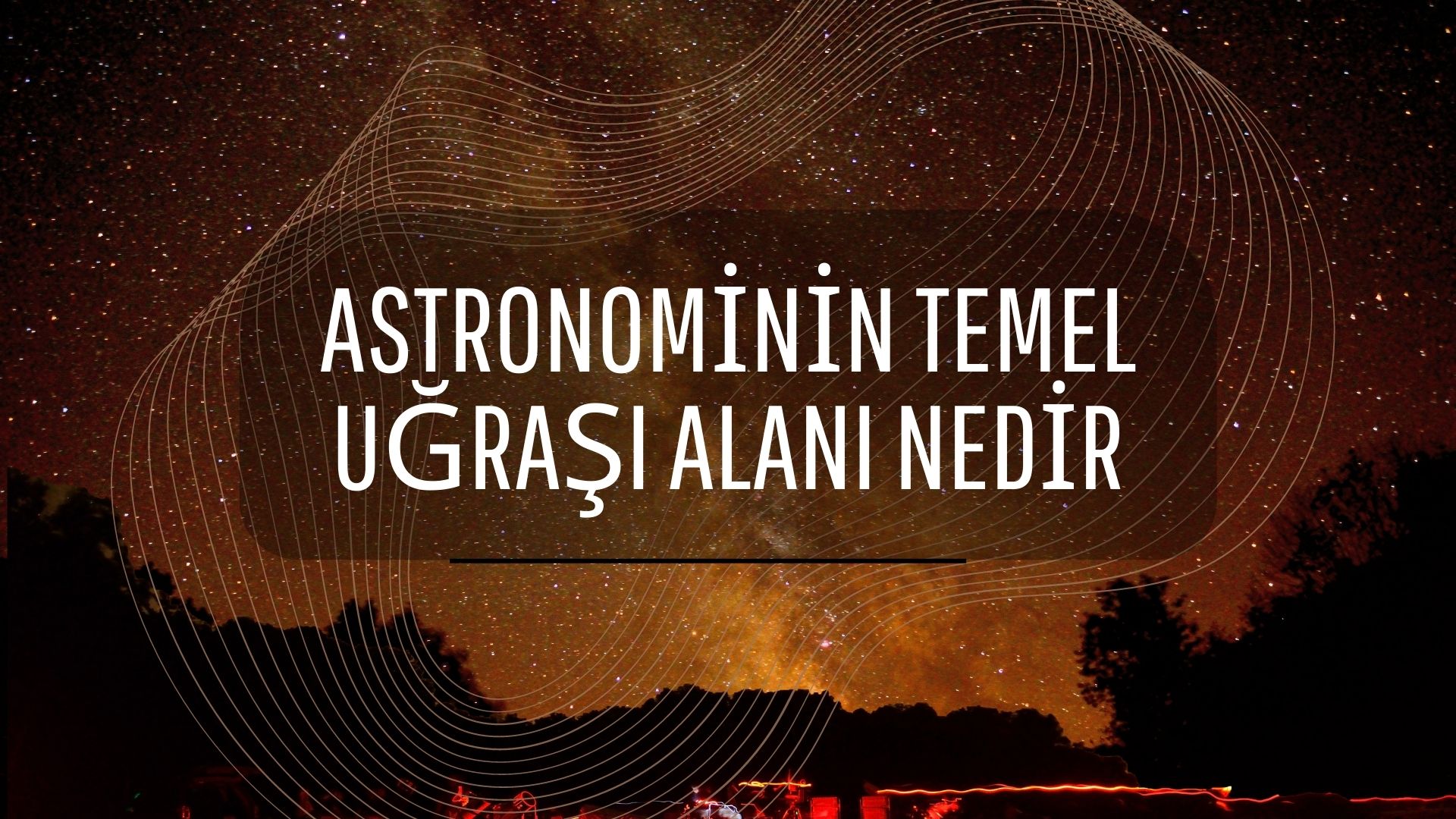Astronominin Temel Uğraşı Alanı Nedir
Öncelikle astronominin tanımı ile başlamak gerekirse temel olarak gök cisimlerinin birbirleri ile olan ilişkilerini, fiziksel ve kimyasal özelliklerini, hareketlerini ve durumlarını inceleyen bilim dalı astronomi olarak tanımlanmaktadır. Astronomi kelimesi Latincedeki “astro” ve “nomos” sözcüklerinden türemiştir. “Yıldız Bilimi” anlamına gelmektedir. Türkçe karşılığı “Gök Bilimi” olarak kullanılmaktadır. Astronomi geniş bir çalışma alanına sahiptir ve birçok alt dalı da bulunmaktadır.
Astronominin Alt Bilim Dalları
1-Astromatematik: Gök cisimlerinin yörüngelerinde bulunan çekim kuvvetinin hesaplanması ve gözlemsel verilerin matematiksel ifadelere dönüştürülmesi ile ilgilenir.
2-Astrofizik: Gök cisimlerinin fiziksel yapıları ve madde ile ilgilenir.
3-Astrokimya: Gök cisimleri ve ortamın kimyasal yapısı ile ilgilenir.
4-Astrobiyoloji: Uzaydaki gök cisimleri üzerine canlı oluşumu ve gelişimi ile ilgilenir.
5-Arkeoastronomi: Geçmiş devirlerdeki astronomik çalışmalar hakkında bilgi edinebilmek için arkeolojik kalıntılar ile ilgilenir.
6-Astrojeoloji: Gezegenlerin, gök taşlarının ve diğer yapıların oluşumu ve gelişimi ile ilgilenir.
Astronominin Tarihçesi
İnsanlık tarihinin başlangıcından itibaren uzay, gökyüzü, yıldızlar, gezegenler ve daha fazlası insanoğlu için hep bir merak konusu olmuş ve bu alan ile ilgili pek çok araştırma yapılmıştır. Yüzyıllardır araştırmalar yapılmasına rağmen hala uzayın gizemi ve evrenin oluşumu tam olarak çözülememiştir. İnsanoğlunun uzaya olana merakı gökyüzünü gözlemlemeleri ile başlamış ve süregelen bir uğraş konusu olmuştur. Gecenin ve gündüzün oluşumu, yıldızlar ve güneş ilk incelenen astronomik terimlerdir.
İlk çağlarda insanlar yıldızlara bakarak yön bulmada, güneş ve ayı gözlemleyerek de zamanı belirlemede astronomiden faydalanmıştır. İlk astronomik gözlem ise Babiller tarafından gerçekleştirilmiştir. Buna ek olarak piramitlerde astronomik hesaplamalar yapılarak konumlandırılmıştır. M.Ö. 6. yüzyılda ise Thales gök bilimi üzerine çalışmalar yapmış ve M.Ö. 525 yılında uzun çalışmaları sonucunda güneş tutulmasını hesaplamayı başarılı bir şekilde gerçekleştirmiştir. 9. yüzyıla baktığımızda Türk gök bilimci olan Harezmi astronomik cetveller üzerine eserler bırakmıştır. Biraz daha günümüze yaklaşıp Orta çağa geldiğimizde ise teleskobun icadı ile gök biliminde çok büyük gelişmelere tanıklık edilmiştir. Yeni Çağ Dönemin bilim adamlarından Kopernik gök cisimlerinin hareketlerini güneşi merkez alarak açıklamış, Newton ve Kepler de gezegenler arasındaki manyetik alan yapısını keşfetmiştir.

What is the Main Field of Study of Astronomy?
First of all, if we need to start with the definition of astronomy, the branch of science that examines the relationships, physical and chemical properties, movements and states of celestial bodies with each other is defined as astronomy . The word astronomy is derived from the Latin words “astro” and “nomos”. It means “Star Science”. Its Turkish equivalent is used as “Gök Bilimi”. Astronomy has a wide field of study and has many sub-branches.
Sub-Disciplines of Astronomy
1-Astromathematics: It deals with calculating the gravitational force in the orbits of celestial bodies and converting observational data into mathematical expressions.
2-Astrophysics: It deals with the physical structures of celestial bodies and matter.
3-Astrochemistry: It deals with the celestial bodies and the chemical structure of the environment.
4-Astrobiology: It deals with the formation and development of living things on celestial bodies in space.
5-Archeoastronomy: It deals with archaeological remains in order to obtain information about astronomical studies in the past.
6-Astrogeology: It deals with the formation and development of planets, meteorites and other structures.
History of Astronomy
Since the beginning of human history, space, sky, stars, planets and more have always been a subject of curiosity for human beings, and many researches have been made on this field. Despite centuries of research, the mystery of space and the formation of the universe has not been fully resolved. Mankind’s interest in space began with their observation of the sky and has been an ongoing issue . The formation of night and day, the stars and the sun were the first astronomical terms to be studied.
In the early ages, people benefited from astronomy in finding direction by looking at the stars, and in determining the time by observing the sun and moon. The first astronomical observation was made by the Babylonians. In addition, the pyramids were positioned by making astronomical calculations. B.C. In the 6th century, Thales worked on astronomy and BC. As a result of his long studies in 525, he successfully calculated the solar eclipse. When we look at the 9th century, the Turkish astronomer Harezmi left works on astronomical rulers. When we approach the present day and come to the Middle Ages, great developments in astronomy have been witnessed with the invention of the telescope. Copernicus, one of the scientists of the New Age Period, explained the movements of celestial bodies by centering the sun, and Newton and Kepler discovered the magnetic field structure between the planets.








